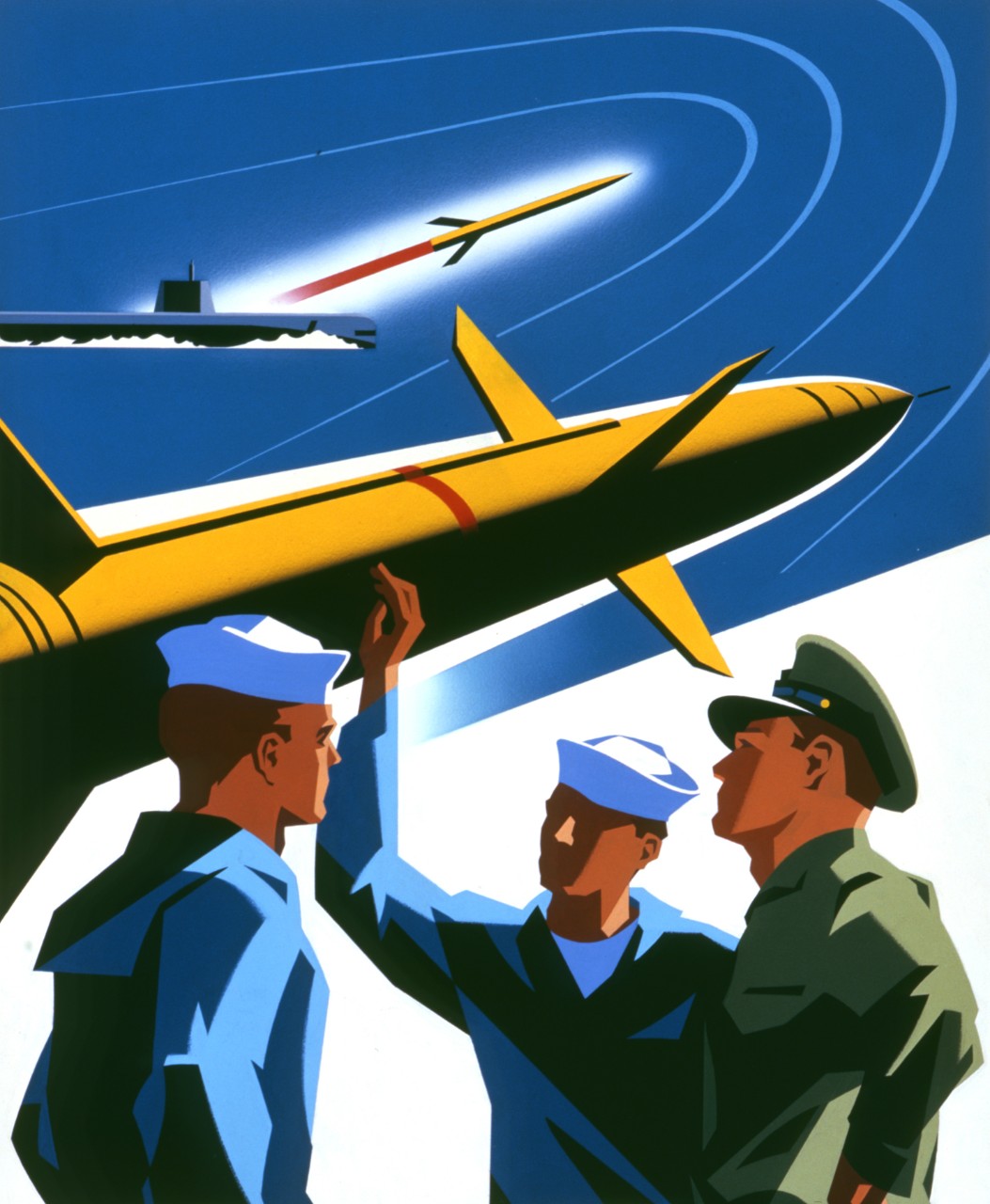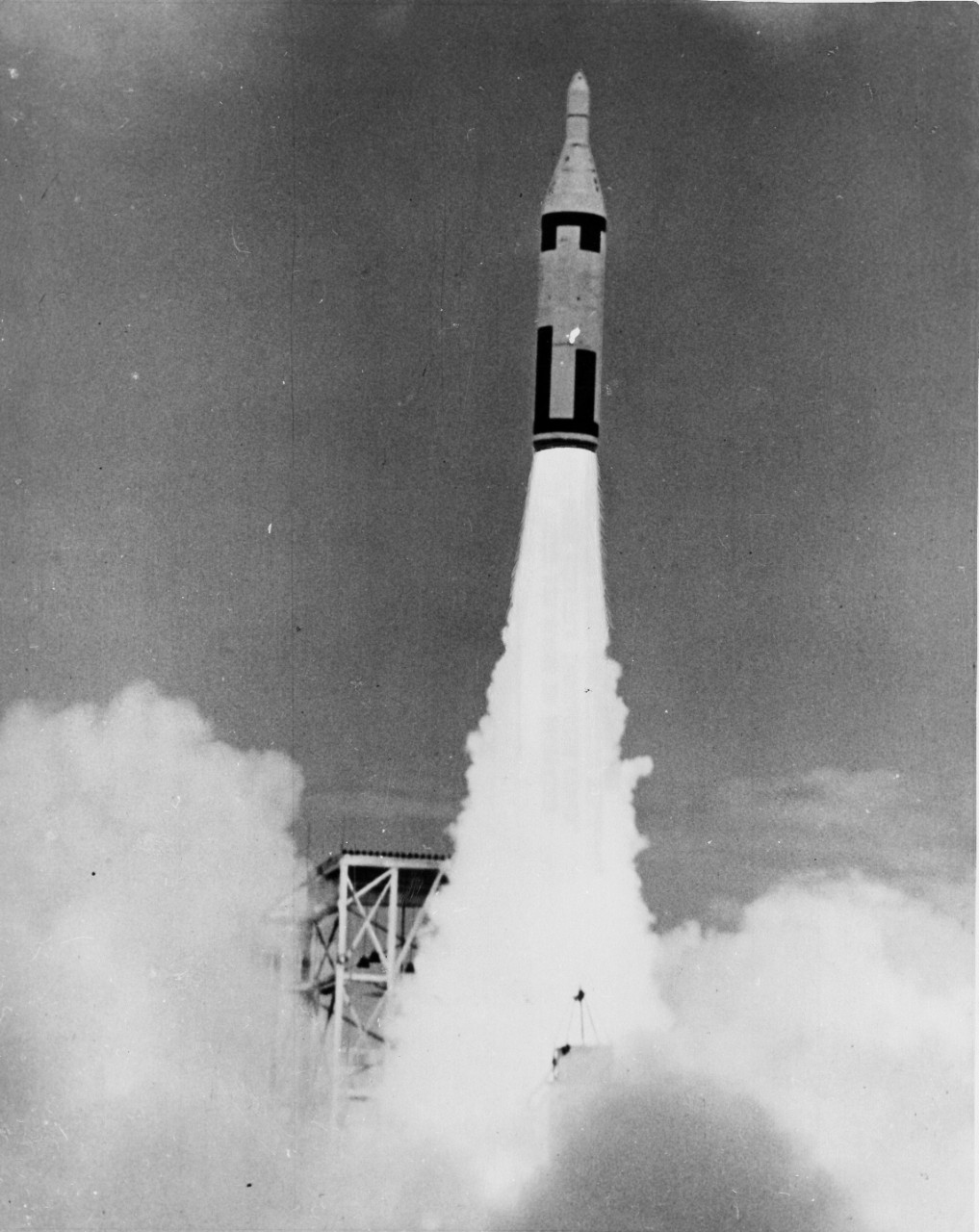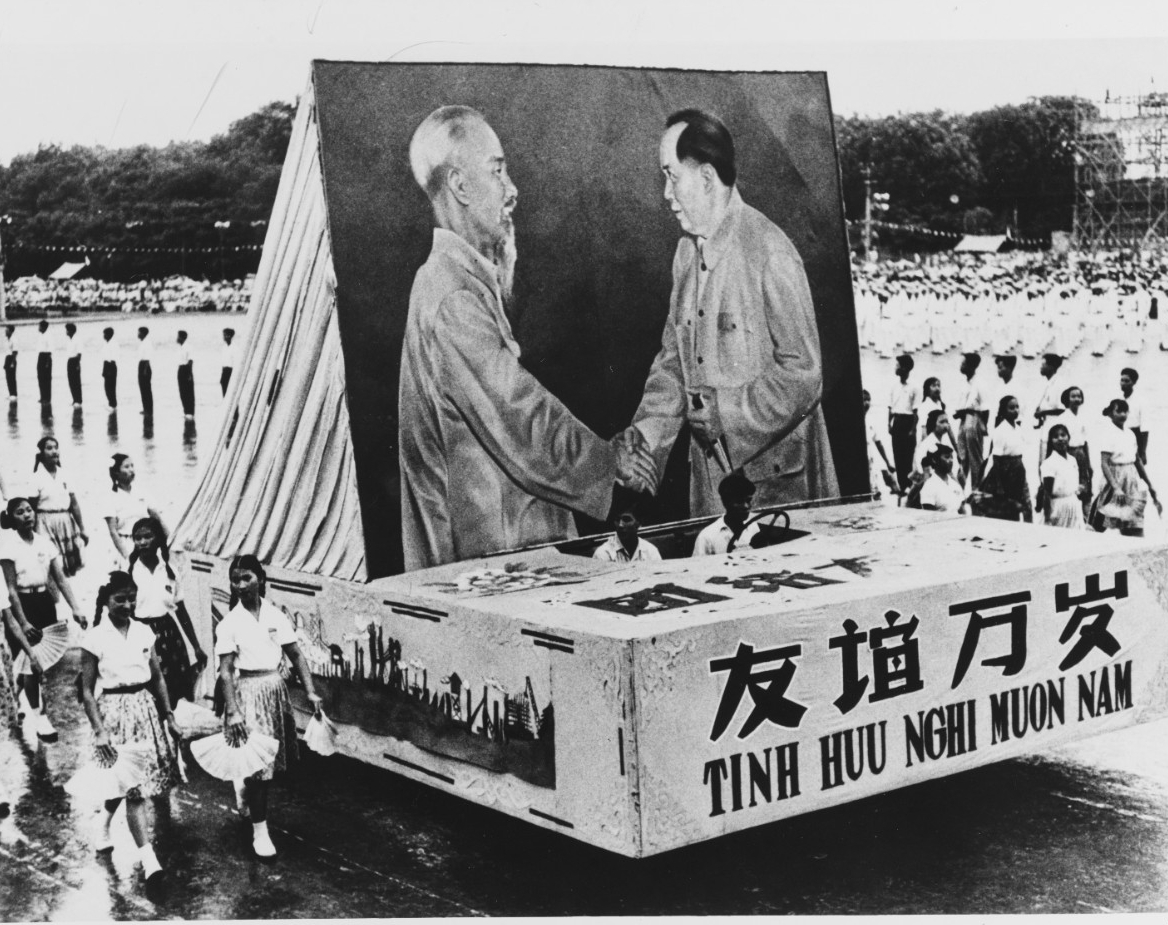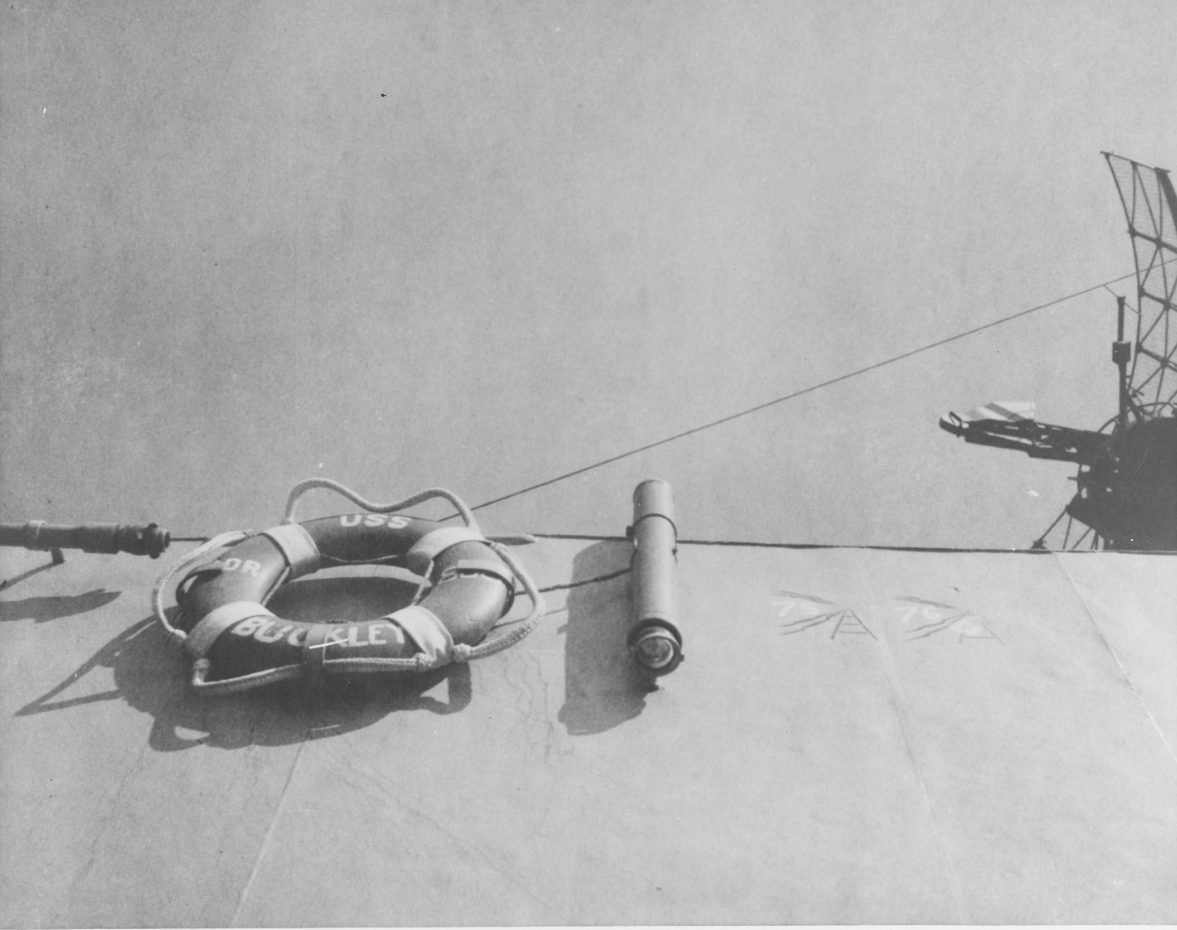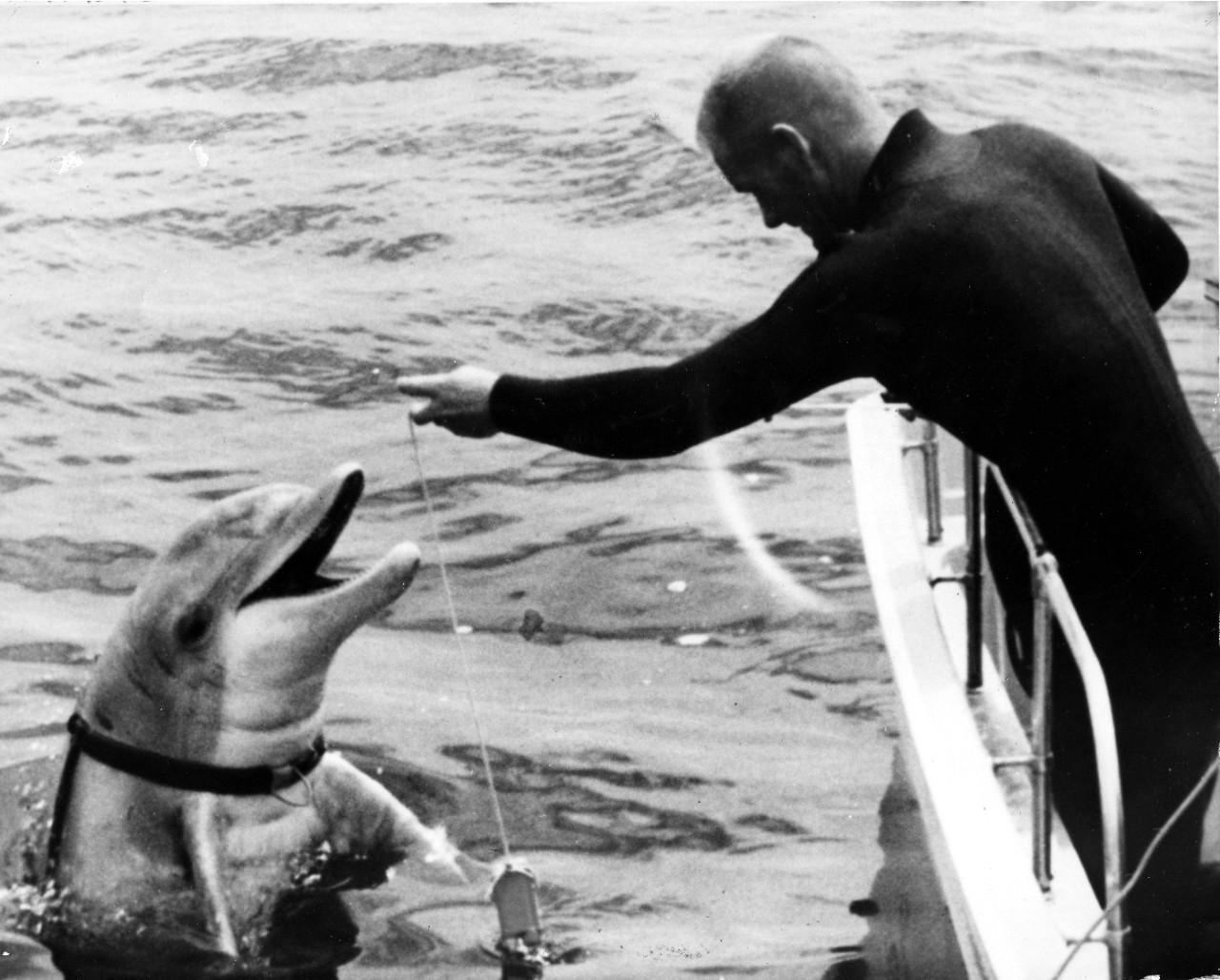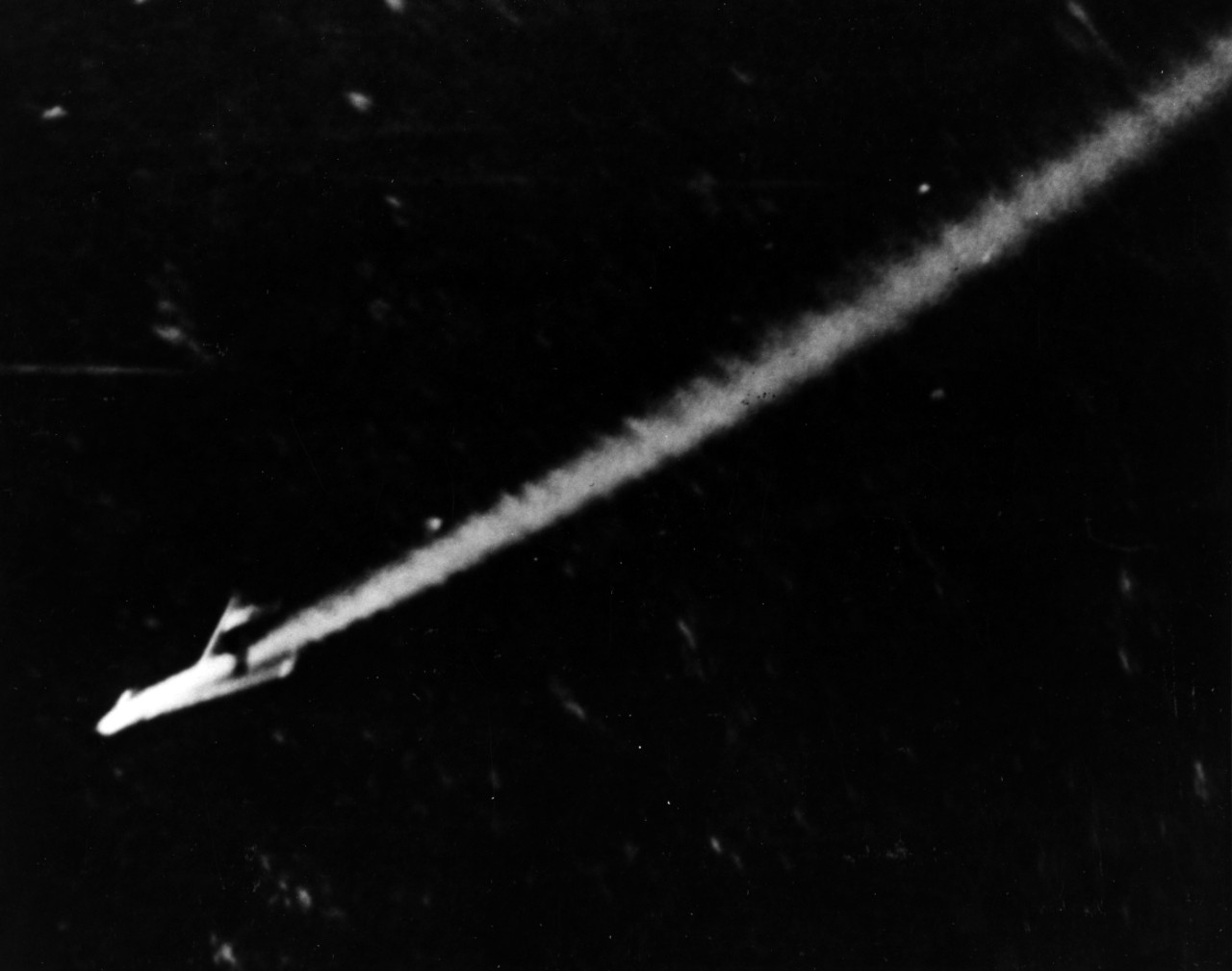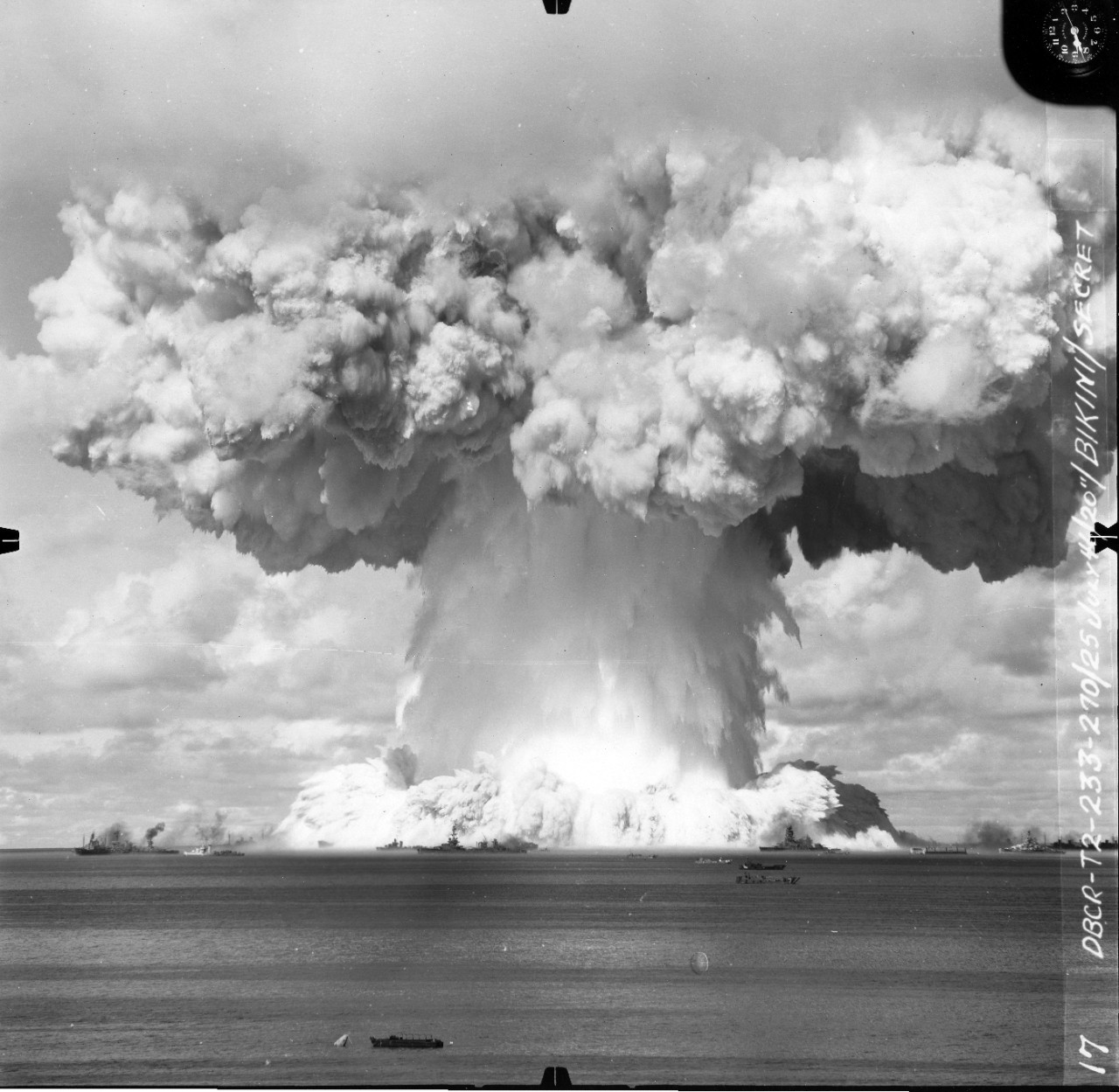- Expand navigation for Commemoration Toolkits Commemoration Toolkits
- Expand navigation for Navy Birthday Navy Birthday
- Expand navigation for World War II World War II
- National Vietnam War Veterans Day
- Expand navigation for The 9/11 Terrorist Attacks The 9/11 Terrorist Attacks
- Expand navigation for 75th Anniversary of NATO 75th Anniversary of NATO
- Expand navigation for Wars, Conflicts, and Operations Wars, Conflicts, and Operations
- American Revolution
- Quasi-War with France
- Barbary Wars
- War of 1812
- Mexican-American War
- Expand navigation for Civil War Civil War
- Expand navigation for Spanish-American War Spanish-American War
- Expand navigation for Early 20th-Century Conflicts Early 20th-Century Conflicts
- Expand navigation for World War I World War I
- Expand navigation for World War II World War II
- Expand navigation for Cold War Era Cold War Era
- Expand navigation for Korean War Korean War
- Expand navigation for Vietnam War Vietnam War
- Cuban Missile Crisis
- Expand navigation for Middle East Engagements Middle East Engagements
- POW MIA
- Pirate Interdiction and the U.S. Navy
- Expand navigation for The 9/11 Terrorist Attacks The 9/11 Terrorist Attacks
- Expand navigation for Operations in Former Yugoslavia Operations in Former Yugoslavia
- Expand navigation for Heritage Heritage
- Expand navigation for Uniforms Uniforms
- Uniforms of the U.S. Navy 1776-1783
- Uniforms of the U.S. Navy 1797
- Uniforms of the U.S. Navy 1802
- Uniforms of the U.S. Navy 1812-1815
- Uniforms of the U.S. Navy 1815
- Uniforms of the U.S. Navy 1830-1841
- Uniforms of the U.S. Navy 1841
- Uniforms of the U.S. Navy 1852
- Uniforms of the U.S. Navy 1852-1855
- Uniforms of the U.S. Navy 1862-1863
- Uniforms of the U.S. Navy 1864
- Uniforms of the U.S. Navy 1898
- Uniforms of the U.S. Navy 1900
- Uniforms of the U.S. Navy 1905-1913
- Uniforms of the U.S. Navy 1917-1918
- Uniforms of the U.S. Navy 1918-1919
- Uniforms of the U.S. Navy 1922-1931
- Uniforms of the U.S Navy 1941
- Uniforms of the U.S. Navy 1942-1943
- Uniforms of the U.S. Navy 1943-1944
- Uniforms of the U.S. Navy 1951-1952
- Uniforms of the U.S. Navy 1961
- Uniforms of the U.S. Navy 1967
- Expand navigation for Customs and Traditions Customs and Traditions
- Sailors' Tattoos
- Goats and the U.S. Navy
- Navy Athletics
- The Sailor’s Creed
- The Ship’s Bell
- Striking the Flag
- Unofficial Navy Certificates
- Precedence of Forces in Parades
- Passing Honors, National Anniversaries, and Solemnities
- Rocks and Shoals: Articles for the Government of the U.S. Navy
- Plank Owners
- Ship Naming
- Twenty-One Gun Salute
- Change of Command
- Navy Music
- Commissioning Pennant
- Ship Launching and Commissioning
- Burial at Sea
- Crossing the Line
- Expand navigation for Banners Banners
- Expand navigation for Decorations and Awards Decorations and Awards
- Expand navigation for Speak Like a Sailor Speak Like a Sailor
- Famous Navy Quotations
- Expand navigation for Origins of the Navy Origins of the Navy
- U.S. Navy History Lessons Learned
- The Navy and Marine Corps Team
- Expand navigation for "Ex Scientia Tridens": The U.S. Naval Academy "Ex Scientia Tridens": The U.S. Naval Academy
- Expand navigation for Uniforms Uniforms
- Expand navigation for Communities Communities
- Expand navigation for Chaplain Corps Chaplain Corps
- Expand navigation for Chief Petty Officer Chief Petty Officer
- Seabees
- Expand navigation for Navy Medicine Navy Medicine
- Expand navigation for Naval Aviation Naval Aviation
- Submarine Force
- Expand navigation for Surface Navy Surface Navy
- Navy Divers
- Naval Special Warfare
- Supply Corps
- Explosive Ordnance Disposal
- Expand navigation for Disasters and Phenomena Disasters and Phenomena
- Expand navigation for Organization and Administration Organization and Administration
- Leadership
- Expand navigation for Ranks Ranks
- Regulations and Policy
- Personnel
- Expand navigation for Service and Medical Records Service and Medical Records
- Expand navigation for U.S. Navy Installations U.S. Navy Installations
- Washington Navy Yard, District of Columbia
- Naval Station Norfolk, Virginia
- Naval Submarine Base New London, Connecticut
- Naval Station Mayport, Florida
- Naval Air Station Pensacola, Florida
- Naval Station Great Lakes, Illinois
- Naval Base San Diego, California
- Naval Base Kitsap, Washington
- Naval Station Pearl Harbor, Hawaii
- U.S. Fleet Activities Yokosuka, Japan
- Naval Support Activity Bahrain
- Naval Support Activity Naples, Italy
- Expand navigation for Historic Former U.S. Navy Bases and Stations Historic Former U.S. Navy Bases and Stations
- Expand navigation for Diversity Diversity
- Expand navigation for The African American Experience in the U.S. Navy The African American Experience in the U.S. Navy
- Expand navigation for Women in the U.S. Navy Women in the U.S. Navy
- Asian Americans and Pacific Islanders in the U.S. Navy
- Hispanic Americans in the U.S. Navy
- Contributions of Native Americans to the U.S. Navy
- Naval Service of LGBTQI+ Personnel
- Expand navigation for Exploration and Innovation Exploration and Innovation
- Electricity and USS Trenton
- Expand navigation for The World Cruise of the Great White Fleet The World Cruise of the Great White Fleet
- The Voyage of a Lifetime
- The Ships of the Great White Fleet
- Great White Fleet Gallery
- Beginning of the Cruise
- Fleet Leadership
- Crossing the Equator
- World Cruise Experience
- At Sea
- Puerto Rico-South America-Mexico
- U.S. West Coast
- Hawaii-Australia-New Zealand
- Japan and China
- Philippines and Ceylon (Sri Lanka)
- Suez Canal-Egypt-Turkey
- Mediterranean
- End of the Cruise
- Memorabilia
- Expand navigation for Navy Role in Space Exploration Navy Role in Space Exploration
- Polar Exploration
- The First U.S. Naval Observatory
- Bathyscaphe Trieste
- Airships & Dirigibles
- Higgins Boats
- Navy’s Use of Torpedoes
- The Nuclear Navy
- Radar and Sonar
- Navy’s Use of Unmanned Aerial Vehicles
- Naval Mine Warfare
- The Navy’s Use of Carrier Pigeons
- Expand navigation for The Steam Navy The Steam Navy
- The Steel Navy
- Expand navigation for Notable People Notable People
- Expand navigation for Presidents Presidents
- Expand navigation for Chiefs of Naval Operations Chiefs of Naval Operations
- The Office
- Admiral William S. Benson
- Admiral Robert E. Coontz
- Admiral Edward W. Eberle
- Admiral Charles F. Hughes
- Admiral William V. Pratt
- Admiral William H. Standley
- Fleet Admiral William D. Leahy
- Admiral Harold R. Stark
- Fleet Admiral Ernest J. King
- Fleet Admiral Chester W. Nimitz
- Admiral Louis E. Denfeld
- Admiral Forrest P. Sherman
- Admiral William M. Fechteler
- Admiral Robert B. Carney
- Admiral Arleigh A. Burke
- Admiral George W. Anderson Jr.
- Admiral David L. McDonald
- Admiral Thomas H. Moorer
- Admiral Elmo R. Zumwalt Jr.
- Admiral James L. Holloway III
- Admiral Thomas B. Hayward
- Admiral James D. Watkins
- Admiral Carlisle A. H. Trost
- Admiral Frank B. Kelso II
- Admiral Jeremy M. Boorda
- Admiral Jay L. Johnson
- Admiral Vernon E. Clark
- Admiral Michael G. Mullen
- Admiral Gary Roughead
- Admiral Jonathan W. Greenert
- Admiral John M. Richardson
- Admiral Michael Gilday
- Expand navigation for Master Chief Petty Officers of the Navy Master Chief Petty Officers of the Navy
- MCPON Delbert D. Black
- MCPON John D. Whittet
- MCPON Robert J. Walker
- MCPON Thomas S. Crow
- MCPON Billy C. Sanders
- MCPON William H. Plackett
- MCPON Duane R. Bushey
- MCPON John Hagan
- MCPON James L. Herdt
- MCPON Terry D. Scott
- MCPON Joe R. Campa Jr.
- MCPON Rick D. West
- MCPON Michael D. Stevens
- MCPON Steven S. Giordano
- MCPON Official Photographs
- Expand navigation for Historical Figures Historical Figures
- Expand navigation for Secretaries of the Navy Secretaries of the Navy
- Benjamin Stoddert (1798 - 1801)
- Robert Smith (1801 - 1809)
- Paul Hamilton (1809 - 1812)
- William Jones (1813 - 1814)
- Benjamin W. Crowninshield (1815 - 1818)
- Smith Thompson (1819 - 1823)
- Samuel Southard (1823 - 1829)
- John Branch, Jr. (1829 - 1831)
- Levi Woodbury (1831 - 1834)
- Mahlon Dickerson (1834 - 1838)
- James K. Paulding (1838 - 1841)
- George Edmund Badger (1841)
- Abel P. Upshur (1841 - 1843)
- David Henshaw (1843 - 1844)
- Thomas W. Gilmer (1844)
- John Y. Mason (1844-1845) (1846-1849)
- George Bancroft (1845 - 1846)
- William B. Preston (1849 - 1850)
- William A. Graham (1850 - 1852)
- John P. Kennedy (1852 - 1853)
- James C. Dobbin (1853 - 1857)
- Isaac Toucey (1857 - 1861)
- Gideon Welles (1861 - 1869)
- Adolph Edward Borie (1869)
- George M. Robeson (1869 - 1877)
- Richard W. Thompson (1877 - 1880)
- Nathan Goff, Jr. (1881)
- William Henry Hunt (1881 - 1882)
- William Eaton Chandler (1882 - 1885)
- William C. Whitney (1885 - 1889)
- Benjamin F. Tracy (1889 - 1893)
- Hilary A. Herbert (1893 - 1897)
- John D. Long (1897 - 1902)
- William H. Moody (1902 - 1904)
- Paul Morton (1904 - 1905)
- Charles J. Bonaparte (1905 - 1906)
- Victor H. Metcalf (1906 - 1908)
- Truman H. Newberry (1908 - 1909)
- George von L. Meyer (1909 - 1913)
- Josephus Daniels (1913 - 1921)
- Edwin Denby (1921 - 1924)
- Charles F. Adams, III (1929 - 1933)
- Claude A. Swanson (1933 - 1939)
- Charles Edison (1940)
- William Franklin Knox (1940 - 1944)
- James Forrestal (1944 - 1947)
- John Lawrence Sullivan (1947 - 1949)
- Francis P. Matthews (1949 - 1951)
- Dan A. Kimball (1951 - 1953)
- Robert B. Anderson (1953 - 1954)
- Charles S. Thomas (1954 - 1957)
- Thomas S. Gates (1957 - 1959)
- William Birrell Franke (1959 - 1961)
- John Bowden Connally, Jr. (1961)
- Fred Korth (1962 - 1963)
- Paul B. Fay (acting) (1963)
- Paul Henry Nitze (1963 - 1967)
- Charles Fitz Baird (acting) (1967)
- Paul R. Ignatius (1967 - 1969)
- John Hubbard Chafee (1969 - 1972)
- John William Warner (1972 - 1974)
- J. William Middendorf (1974 - 1977)
- William Graham Claytor, Jr. (1977 - 1979)
- Edward Hidalgo (1979 - 1981)
- John Lehman (1981 - 1987)
- James H. Webb (1987 - 1988)
- William L. Ball (1988 - 1989)
- Henry L. Garrett III (1989 - 1992)
- Daniel Howard (acting) (1992)
- Sean Charles O'Keefe (1992 - 1993)
- ADM Frank B. Kelso, II (acting) (1993)
- John Howard Dalton (1993 - 1998)
- Richard Jeffrey Danzig (1998 - 2001)
- Robert B. Pirie, Jr. (acting) (2001)
- Gordon R. England (2001-2003) (2003-2005)
- Susan M. Livingstone (acting) (2003)
- Hansford T. Johnson (acting) (2003)
- Donald Charles Winter (2006 - 2009)
- Raymond Edwin Mabus, Jr. (2009 - 2017)
- Sean G. J. Stackley (acting) (2017)
- Richard V. Spencer (2017 - 2019)
- Thomas B. Modly (acting) (2019-2020)
- James E. McPherson (acting) (2020)
- Kenneth J. Braithwaite (2020-2021)
- Thomas W. Harker (acting) (2021)
- Carlos Del Toro (2021-present)
- Medal of Honor Recipients
- Expand navigation for Namesakes Namesakes
- Sergeant Cornelius H. Charlton
- Private First Class Oscar P. Austin
- Civil Rights Activist Medgar Evers
- Private George Watson
- Cook First Class William Pinckney
- Commander Mary Sears
- Rear Admiral Grace Hopper
- Franklin and Eleanor Roosevelt
- Senator Daniel K. Inouye
- Private First Class Herbert K. Pililaau
- Sergeant First Class Rodney J.T. Yano
- First Lieutenant Baldomero Lopez
- Master Sergeant Roy Benavidez
- Civil Rights Activist Cesar Chavez
- Admiral David Glasgow Farragut
- Private First Class Fernando Garcia
- Sergeant Alfredo Gonzalez
- Sergeant Rafael Peralta
- Chief Petty Officer James E. Williams
- Guide and Interpreter Sacagawea
- Sergeant Darrell Samuel Cole
- Lenah Sutcliffe Higbee
- Captain Thomas J. Hudner, Jr.
- Expand navigation for Trailblazers Trailblazers
- Expand navigation for Notable Ships Notable Ships
- Expand navigation for U.S. Navy’s Six Original Frigates U.S. Navy’s Six Original Frigates
- Expand navigation for Ships of Sail Ships of Sail
- Expand navigation for Sail-to-Steam Sail-to-Steam
- Expand navigation for Modern Ships Modern Ships
- Alchiba (AK-23)
- Arizona (BB-39)
- Cole (DDG-67)
- Fletcher (DD-445)
- Harmon (DE-678)
- Houston (CA-30)
- Indianapolis (CA-35)
- Jacob Jones (DD-61)
- Johnston (DD-557)
- Maddox (DD-731)
- Missouri (BB-63)
- O'Bannon (DD-450)
- Pueblo (AGER-2)
- Samuel B. Roberts (FFG-58)
- San Diego (CL-53)
- San Francisco (CA-38)
- Tripoli (LPH-10)
- Turner Joy (DD-951)
- Washington (BB-56)
- Expand navigation for Aircraft Carriers Aircraft Carriers
- Expand navigation for Submarines Submarines
- Operations
- Finding Aids Glossaries Guides
- Cold War
- Special Operations-Warfare
- Image (gif, jpg, tiff)
- NHHC
The Cold War Era: 1945-1991
Dawning of the Cold War
Soon after helping defeat Fascist tyranny in World War II, American Sailors faced a new global threat to the United States and the values for which their nation had long been a standard bearer; democracy, basic human rights, and freedom. The USSR, under a murderous dictator, Joseph Stalin, acted to solidify the wartime conquests of the Soviet Red Army and advance the cause worldwide of Marxism Leninism, an ideology that subverted the very ideals most Americans then held sacred.
Working with local Communist leaders and movements in the years after the war, Stalin eliminated the political and economic independence of Poland, Czechoslovakia, and other nations in Eastern Europe. He put diplomatic and military pressure on Turkey and Iran in the Middle East and supplied war material to Communists fighting to overthrow the government of Greece. In 1948, the Soviets sparked a confrontation with the United States and its European allies over control of Berlin, the occupied and divided capital of the defeated German nation.
In the Far East, regional Communist movements took the lead, but received military assistance from Moscow in efforts to eliminate opposing movements and governments. Ho Chi Minh led Vietnamese Communists and other nationalists against the French colonial government in Indochina. Kim Il Sung and his Korean Communist supporters engaged in a vicious struggle for political control of the Korean people with Syngman Rhee and his anti-Communist adherents. In 1949, Mao Tse-tung and his Chinese Communist armies pushed the forces of the Chiang Kai-shek government off the mainland of Asia and established the People's Republic of China.
The United States, under the leadership of President Harry S. Truman, had already taken economic, political, and military steps to deal with the new threat posed by the Soviet Union and its allies. American taxpayers provided billions of dollars to restore the war-ravaged economies of Western Europe, under the Marshall Plan, and the similarly devastated Japanese economy. The U.S. government strengthened political ties with many like-minded anti-Communist governments around the globe. Finally, the Truman administration adopted a broad "Containment Strategy," in simplest terms a major effort to build a wall around the Communist world that would be defended by the armed might of the United States and its allies. The United States Navy, its warships and aircraft--and above all its Sailors-- guarded the ramparts of the containment wall from the beginning of the so-called "Cold War" to its victorious end.
Extracted from "The U.S. Navy in the Cold War Era, 1945-1991," by Edward J. Marolda
***
Additional Reading
The U.S. Navy in the Cold War Era, 1945-1991, by Edward J. Marolda, Senior Historian, Naval Historical Center
Stalin's Cold War Military Machine: A New Evaluation (Colloquium on Contemporary History No. 6, 18 December 1991)
Conflict and Cooperation: The U.S. and Soviet Navies in the Cold War (Colloquium on Contemporary History No. 10, 12 June 1996)
H-Gram 029-3: A Brief History of U.S. Navy Cold War Aviation Incidents (Excluding Korea and Vietnam)
Forward Presence in the Modern Navy: From the Cold War to a Future Tailored Force, by Thomas G. Mahnken
Operation Crossroads (overview by Kati Engel, NHHC Communication and Outreach Division)
Operation Crossroads (Navy Library documents)
Strategic Deterrence (collection of essays, articles, and other resources covering the Navy's role in this important Cold War planning concept)
A Brief History of U.S. Navy Fleet Ballistic Missiles and Submarines (photo essay by Randall Fortson, NHHC Histories and Archives Division)
Notable Dates
Strategic Deterrence and the Undersea Long Range Missile System, later called Trident (31 March 1971)
Cold War Operations
Communist Solidarity. In Hanoi, a large parade poster shows Ho Chi Minh, ruler of North Vietnam, shaking hands with other of his principal supporters, party chairman Mao TSE-Tung of Communist China. Peking backs the North Vietnamese Campaign of Aggression and Subversion against South Vietnam. (65-1277)
Tuffy the porpoise. Tuffy, the Naval Missile Center's well-known trained porpoise, responds to an acoustic device like one of those attached to a missile target cradle at Point Mugu. Tuffy found the $4,700 cradle which will now be reused by the Navy. Trainer Wally Ross holds the signal device out for Tuffy to hear. November 12, 1965. (L55-02-02-01.03)
Soviet-Built MiG-15 jet fighter is shot down by a Navy fighter over Korea. Photo is dated 17 March 1953, at a time when no enemy planes were shot down by U.S. Navy pilots. This MAY be one of two MiG-15s shot down on 18 November 1952 by VF-781 F9F-5s from USS Oriskany (CVA-34). Official U.S. Navy Photograph, now in the collections of the National Archives. (80-G-483656)
Footnotes
- Accessibility/Section 508 |
- Employee Login |
- FOIA |
- NHHC IG |
- Privacy |
- Webmaster |
- Navy.mil |
- Navy Recruiting |
- Careers |
- USA.gov |
- USA Jobs
- No Fear Act |
- Site Map |
- This is an official U.S. Navy web site

